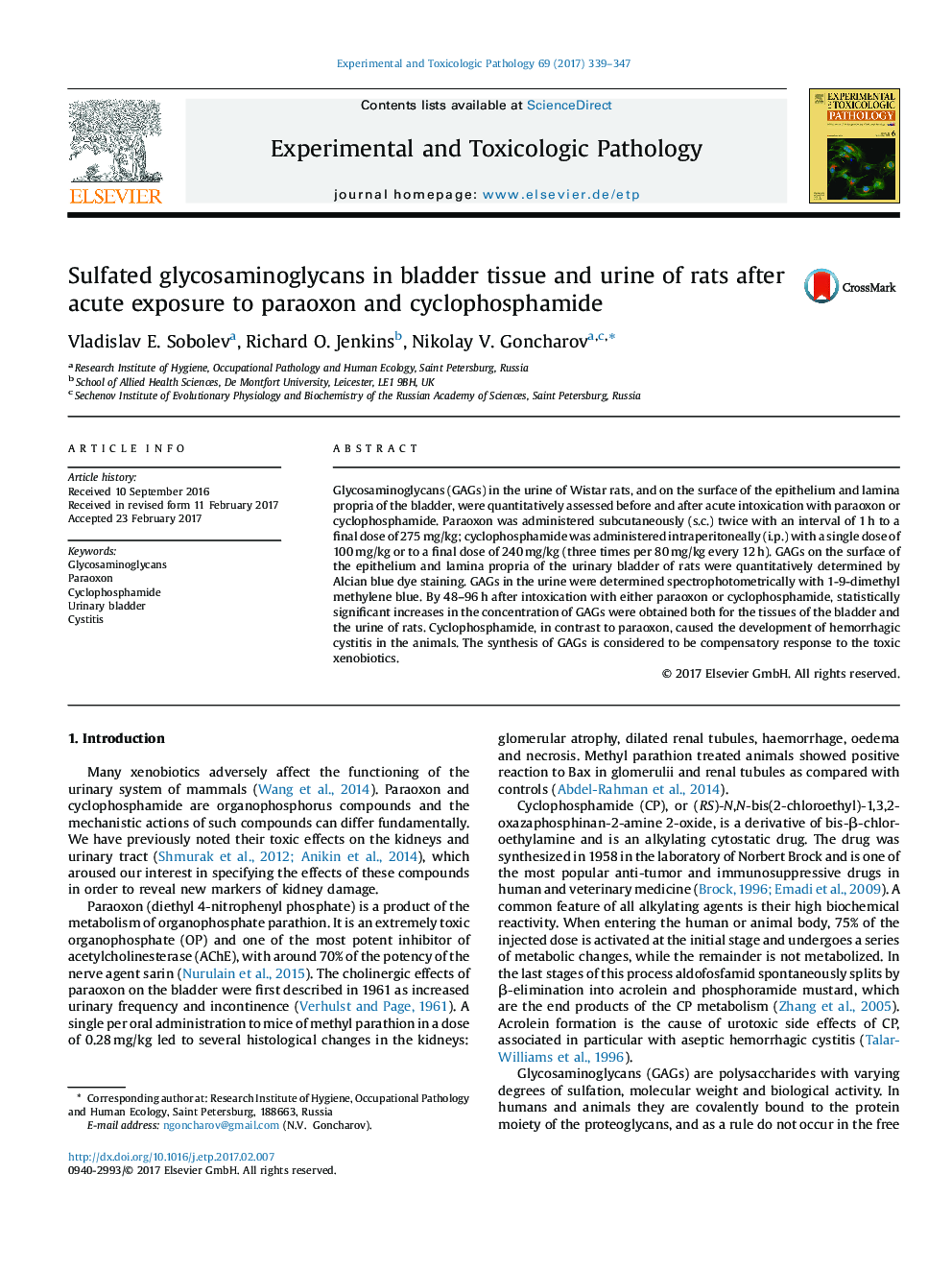| Article ID | Journal | Published Year | Pages | File Type |
|---|---|---|---|---|
| 5549768 | Experimental and Toxicologic Pathology | 2017 | 9 Pages |
Glycosaminoglycans (GAGs) in the urine of Wistar rats, and on the surface of the epithelium and lamina propria of the bladder, were quantitatively assessed before and after acute intoxication with paraoxon or cyclophosphamide. Paraoxon was administered subcutaneously (s.c.) twice with an interval of 1Â h to a final dose of 275Â mg/kg; cyclophosphamide was administered intraperitoneally (i.p.) with a single dose of 100Â mg/kg or to a final dose of 240Â mg/kg (three times per 80Â mg/kg every 12Â h). GAGs on the surface of the epithelium and lamina propria of the urinary bladder of rats were quantitatively determined by Alcian blue dye staining. GAGs in the urine were determined spectrophotometrically with 1-9-dimethyl methylene blue. By 48-96Â h after intoxication with either paraoxon or cyclophosphamide, statistically significant increases in the concentration of GAGs were obtained both for the tissues of the bladder and the urine of rats. Cyclophosphamide, in contrast to paraoxon, caused the development of hemorrhagic cystitis in the animals. The synthesis of GAGs is considered to be compensatory response to the toxic xenobiotics.
